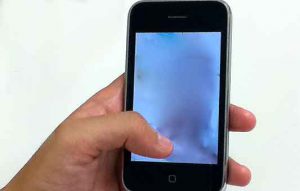 Picking up the smartphone while checking it is a contagious act, like yawning: imitation by others occurs within 30 seconds, regardless of differences in people’s gender, age, or level of familiarity (strangers, acquaintances, or relatives).
Picking up the smartphone while checking it is a contagious act, like yawning: imitation by others occurs within 30 seconds, regardless of differences in people’s gender, age, or level of familiarity (strangers, acquaintances, or relatives).
Checking the smartphone is a highly contagious gesture that falls within the “phenomena of spontaneous mimicry”, as a study published in the Journal of Ethology and conducted by a group of researchers at the University of Pisa shows. This is the first study that has ever applied an ethological approach to the use of cell phones.
Spontaneous mimicry, like the contagion of laughter or yawning, is a biological phenomenon that increases familiarity between subjects by playing a role in the development of social relationships, explains Veronica Maglieri, PhD student at the University of Pisa.

But in this case, mimicry seems to produce an opposite result, since by activating our need to use the cell phone even when we are in company, we move away from the reality we are living, and we are driven to a completely virtual reality even if we are surrounded by physical people.
The study indicates that mimicry can be at the basis of the widespread use of these devices at a large scale.
To evaluate the importance of the mimicry phenomenon in the use of smartphones at a large scale, it would be interesting to check if the visual static/dynamic advertisements involving users looking at their devices are more effective than those not showing any user but only the device.
Working at everyday-social scale, unconscious mimicry in the use of smartphones can have repercussions also at a large scale possibly being one of the mechanisms at the basis of the diffusion of these devices across societies.
For more information
Journal of Ethology
Navigating from live to virtual social interactions: looking at but not manipulating smartphones provokes a spontaneous mimicry response in the observers
Link…
https://link.springer.com/article/10.1007/s10164-021-00701-6
Università di Pisa
Link…
Marco Dal Negro
This post is also available in:
 Italian
Italian


